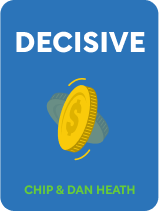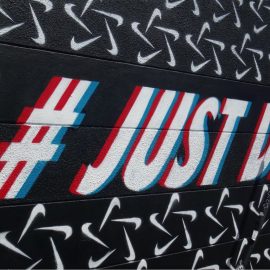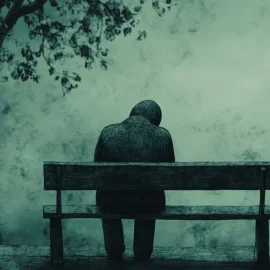

This article is an excerpt from the Shortform book guide to "Decisive" by Chip and Dan Heath. Shortform has the world's best summaries and analyses of books you should be reading.
Like this article? Sign up for a free trial here.
Do you always have a plan B? Why is it important to plan for the worst and hope for the best, as the popular adage goes?
Most of us tend to underestimate the likelihood of the worst-case scenario, thinking that the chances of it coming to pass are slim to none. As a result, we fail to make contingency plans, and if the worst does come to pass, panic ensues because we’re not prepared to face it.
Here’s why you should always plan for the worst-case scenario, no matter how unlikely it seems.
Make Contingency Plans
When we plan for the worst and hope for the best, we ensure that the worst-case scenario won’t be devastating and that we’ll be more prepared for the success of the best-case scenario.
For example, consider a woman who decides to quit her job and open a food truck. First, she imagines a worst-case scenario and makes a plan for it.
- Worst-case scenario: An accident totals her food truck.
- Plan: She guards against this outcome by purchasing insurance.
Next, she imagines a best-case scenario and makes a plan to be ready for it.
- Best-case scenario: A food critic’s rave review doubles her number of customers.
- Plan: She contacts several friends who work in food service. She tells them that if her demand starts to double, she’ll offer them a job to join her in the kitchen.
(Shortform note: This strategy is similar to Annie Duke’s technique of “scenario planning:” an exercise in which you imagine every potential outcome of your decision. Duke adds a step, however: After you imagine each outcome, estimate its likelihood. Duke claims that this exercise helps you make a more rational decision. In contrast to the Heath brothers’ strategy, Duke intends for scenario planning to happen before the decision is made. Therefore, these two strategies could both be worked into a decision-making process: Scenario planning could serve as a tool to inform a decision, and the Heath brothers’ contingency planning strategy could serve as a tool to prepare for its outcomes.)
Prepare for the Unexpected
When it’s challenging to accurately predict a decision’s worst-case outcomes, we can still prepare for the unforeseeable. The authors argue that even though our hubris will cause us to underestimate the worst-case scenario, we can negate that hubris by working “safety factors” into our predictive calculations. A safety factor is a cushion we can add to our prediction of the worst-case scenario. If it turns out that the worst-case scenario was too optimistic, then the safety factor helps us avoid disaster.
For instance, imagine that the food truck owner estimates her business expenses. She multiplies those estimated expenses by a safety factor of 1.5. That way, if it turns out her estimate fails to account for unexpected costs, she avoids draining her bank account.
(Shortform note: The Heath brothers present their safety factor strategy as a way to avoid worst-case scenarios, like a “rainy day fund.” If you’re someone who’s motivated by positive incentives, you could reframe this strategy as a “sunny day fund.” For example, consider the cushion budget that the food truck owner calculates by multiplying her estimated budget by a safety factor of 1.5. She could motivate herself to save the money by making this a “sunny day fund”: telling herself that if she doesn’t use this budget, she can spend it on something else, such as a vacation.)

———End of Preview———
Like what you just read? Read the rest of the world's best book summary and analysis of Chip and Dan Heath's "Decisive" at Shortform.
Here's what you'll find in our full Decisive summary:
- Why our minds are wired to make bad decisions
- How biases and cognitive flaws distort your thinking
- A four-step process to improve your decision-making






